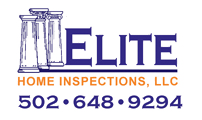Thermal or infrared imaging technology is used by some home inspectors during an inspection. A thermal imaging camera produces a color image showing the amount of thermal energy an object is emitting. This provides a trained inspector with information about the condition of the property. He or she can find problems that are not visible to the naked eye. Thermal imaging in home inspections provides insights to the homebuyer by helping to find certain issues in the home.
Thermal Imaging Helps Find Moisture in a Home
Unless you find a puddle or can see water damage, leaks can easily go unnoticed. With infrared imaging, your inspector can examine a water stain to determine if it’s an active moisture problem or an old stain. A lower temperature might indicate a current moisture problem.
If your home inspector suspects mold, thermal imaging can help find the source by detecting water leaks behind walls that would be difficult to identify without this technology.
Detecting Electrical Hazards With Thermal Imaging in Home Inspections
Infrared imaging can find problems with wiring that may be a potential electrical fire hazard. Your home inspector will use a thermal camera to examine the walls or electrical panel for hot spots. During the scan, dangerous hot spots are displayed as warmer colors on the camera.
Locate Areas of Defective or Missing Insulation
An infrared camera is used to detect uneven heat distribution. It can find areas of missing, defective, or inadequate insulation in a home. Uninsulated or under-insulated spaces will show as cooler areas on an infrared image so the homeowner knows where the insulation needs to be replaced.
Energy Efficiency Issues
Leaky window or door seals can be found using thermal imaging. The camera will register a difference in temperature around doors or windows where there are air leaks. An infrared camera shows the home inspector areas where the seals around doors and windows need to be replaced.
Elite Home Inspections provides inspection services in Louisville and the surrounding areas. If you’re buying a new home, contact us to request an appointment.
